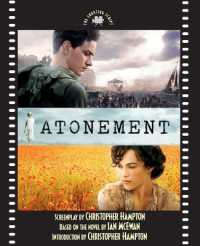- ホーム
- > 洋書
- > 英文書
- > Science / Mathematics
基本説明
ひと昔前は「つまらないもの」の代表とされながら、近年にわかに脚光をあび、データサイエンスとしてもてはやされるようになった統計学。米国の著名な統計学者ハワード・ウェイナーが、その手法と思考法によって 「本当らしさ」と事実との違いを明快にそして楽しく解き明かす。(2017/06/27)
Full Description
Teacher tenure is a problem. Teacher tenure is a solution. Fracking is safe. Fracking causes earthquakes. Our kids are over-tested. Our kids are not tested enough. We read claims like these in the newspaper every day, often with no justification other than 'it feels right'. How can we figure out what is right? Escaping from the clutches of truthiness begins with one simple question: 'what is the evidence?' With his usual verve and flair, Howard Wainer shows how the sceptical mindset of a data scientist can expose truthiness, nonsense, and outright deception. Using the tools of causal inference he evaluates the evidence, or lack thereof, supporting claims in many fields, with special emphasis in education. This wise book is a must-read for anyone who has ever wanted to challenge the pronouncements of authority figures and a lucid and captivating narrative that entertains and educates at the same time.
Contents
Part I. Thinking Like a Data Scientist: 1. How the rule of 72 can provide guidance to advance your wealth, your career and your gas mileage; 2. Piano virtuosos and the four-minute mile; 3. Happiness and causal inference; 4. Causal inference and death; 5. Using experiments to answer four vexing questions; 6. Causal inferences from observational studies: fracking, injection wells, earthquakes, and Oklahoma; 7. Life follows art: gaming the missing data algorithm; Part II. Communicating Like a Data Scientist: 8. On the crucial role of empathy in the design of communications: genetic testing as an example; 9. Improving data displays: the media's, and ours; 10. Inside-out plots; 11. A century and a half of moral statistics: plotting evidence to affect social policy; Part III. Applying the Tools of Data Science to Education: 12. Waiting for Achilles; 13. How much is tenure worth?; 14. Detecting cheating badly: if it could have been, it must have been; 15. When nothing is not zero: a true saga of missing data, adequate yearly progress, and a Memphis charter school; 16. Musing about changes in the SAT: is the college board getting rid of the bulldog?; 17. For want of a nail: why worthless subscores may be seriously impeding the progress of western civilization.








